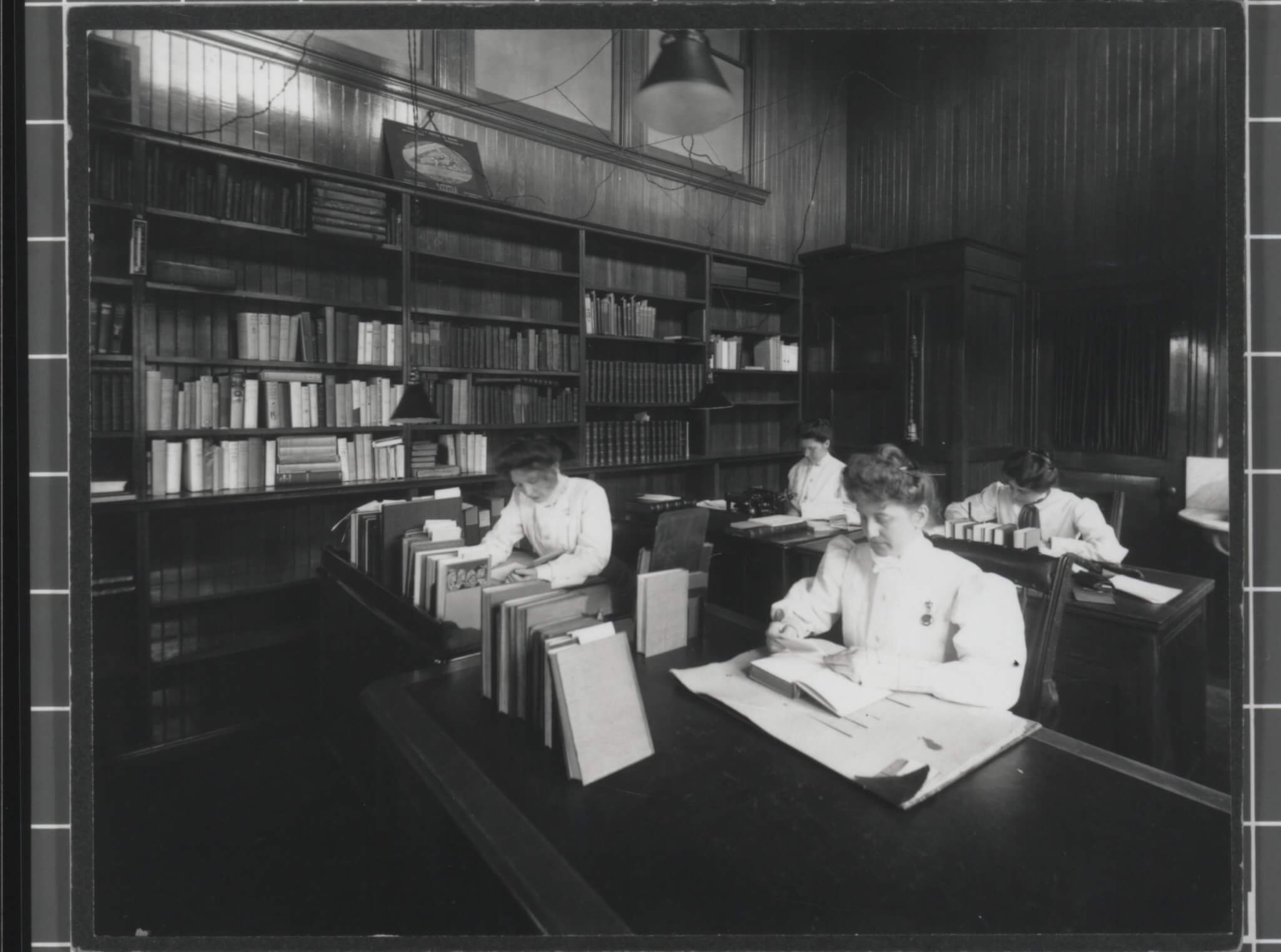On February 20, 1890, Andrew Carnegie’s first municipal library—the Carnegie Free Library of Allegheny—opened in Allegheny City (now the North Side of Pittsburgh). Mr. Carnegie provided $300,000 for the building, on the condition that the city appropriate $15,000 a year for its maintenance. It was built between 1886 – 1890 and was designed by John L. Smithmeyer and Paul J. Pelez, who later went on to design the Library of Congress.
On October 19, 1959, the library officially became a branch of the Carnegie Library of Pittsburgh. After a lightning bolt struck the original building and caused extensive damage in 2006, CLP – Allegheny moved to a new, LEED Silver Certified building near the intersection of Federal St. and E. North Ave.
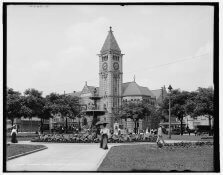
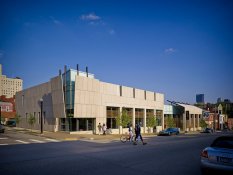
(Left, Carnegie Free Library of Allegheny, 1905. Right, CLP – Allegheny, 2009.)
To celebrate CLP’s 125th anniversary, the staff at the Allegheny branch began looking through historic photos of the original building. The photos were taken between 1890 – 1905, capturing the building and its patrons as they were when the library first opened. We enjoyed looking at the clothing people wore and the architecture of the building, but then we noticed something interesting—and maybe even a little spooky.
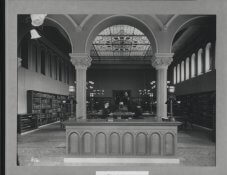
(Circulation Desk, Carnegie Free Library of Allegheny, c. 1890)
In some of the photos, people’s faces appear to be retouched, as if someone hand-drew them. Other details, like intricate scrolls on architectural columns or light fixtures, have also been drawn in. Maybe it was the chill of the October air, but we found these photos to be a little haunting. We started to wonder: were these photos examples of early “photoshopping”?
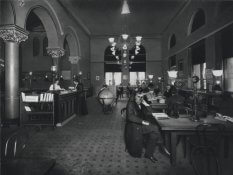
(Circulation Desk, Carnegie Free Library of Allegheny, c. 1890.)
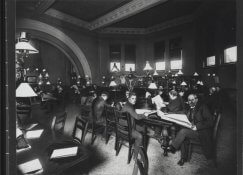
(Reading Room, Carnegie Free Library of Allegheny c. 1890, detail)
As it turns out, photo retouching has been around almost as long as photographs themselves. Englishman William Henry Fox Talbot patented the calotype in 1841, and by 1846 the first known act of photographic retouching was performed by his colleague Calvert Richard Jones and/or his associates by blotting out part of a negative using ink (Source: Faking It: Manipulated Photography Before Photoshop by Mia Fineman).
As photographic processes evolved and changed, so did methods of manipulating negatives and the resulting photos. Retouching desks were created specifically for manipulating negatives. Adding graphite, ink, or paint to a negative would result in a lightened area in the finished photograph, while scratching away bits of film with a scalpel or knife would result in a darkened area in the final photo. Some specialists would paste multiple negatives together to create a single photograph (Source: Mental Floss).
Photographers used photo manipulation to achieve various results, like omitting blemishes or freckles, slimming the subject’s figure, or adding clothing and interesting backgrounds (Source: Complete Self-Instructing Library of Practical Photography, edited by J. B. Schriever, 1909). Still other photographers explored using photo manipulation as part of their art, as in Saint Thomas D’Aquin’s “Man Juggling His Own Head” ca. 1880.
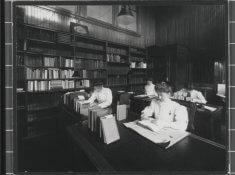
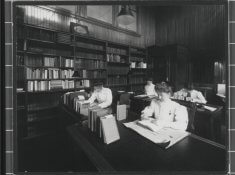
(Cataloging room, Carnegie Free Library of Allegheny, c. 1890. Retouched, left.)
In the case of the redrawn faces in the photos of the Carnegie Free Library of Allegheny, it’s likely that the subjects moved during the exposure of the photo, leaving their images blurred on film. The photographer could have made the choice to draw in their missing faces later, resulting in these fascinating historic photographs. The photographer also chose in some cases to accentuate architectural details or other outlines that may have blurred or been over exposed in the final photograph. Can you spot the changes made between these two similar photos of library staff in the Cataloging Room?
To learn more about early photography, as well as photograph retouching and manipulation, consider these resources:
Faking It: Manipulated Photography Before Photoshop by Mia Fineman
Victorian Photographic Techniques, National Museums Scotland
What Did We Do Before Photoshop?, PBS News Hour
How Photo Retouching Worked Before Photoshop, by Jocelyn Sears, Mental Floss
A Complete Treatise on the Art of Retouching Photographic Negatives, by Robert Johnson, 1898
Complete Self-Instructing Library of Practical Photography, edited by J. B. Schriever, 1909
Learn more about our branch’s history this Wednesday, October 27 at 6p for our virtual event, “Allegheny Was My First Love”: A Look at the Early years of Carnegie Free Library of Allegheny – Carnegie Library of Pittsburgh.

